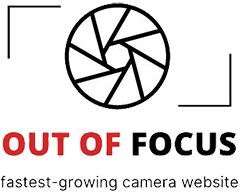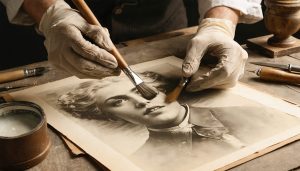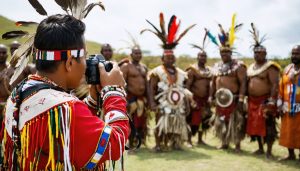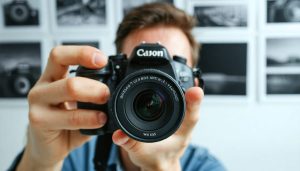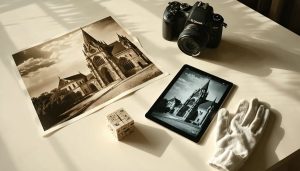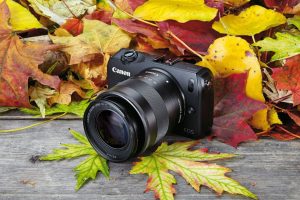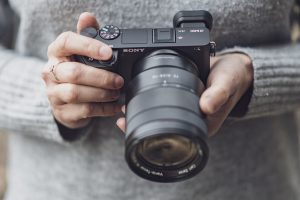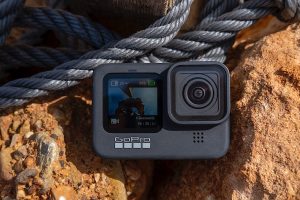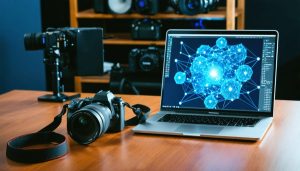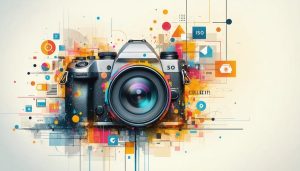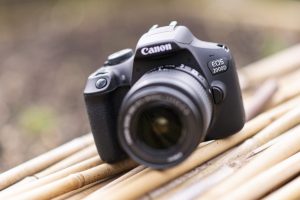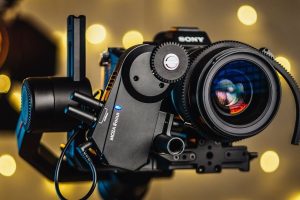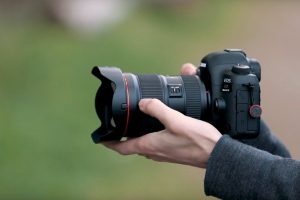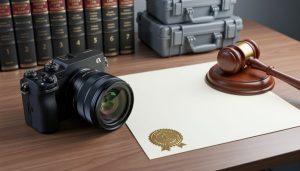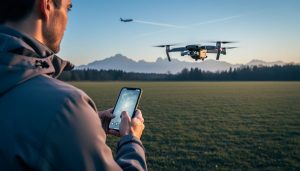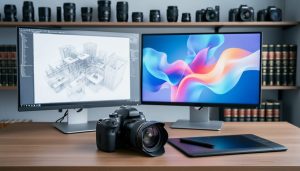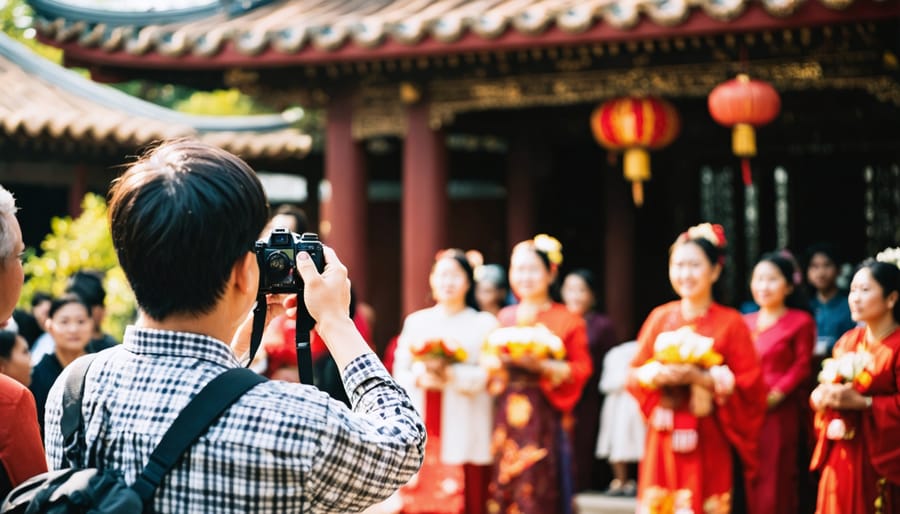
Through the lens of photographic ethnography, we witness humanity’s richest stories unfold – from ancient ceremonies to daily rituals that shape cultural identity. This powerful approach to documenting cultural heritage demands more than technical mastery; it requires an intimate understanding of human connection and ethical storytelling.
Visual anthropologists have long recognized photography’s unique ability to preserve cultural narratives while bridging understanding between communities. Unlike traditional documentary photography, ethnographic work immerses both photographer and viewer in the subtle nuances of cultural expression, requiring patience, cultural sensitivity, and an unwavering commitment to authentic representation.
The intersection of artistic vision and anthropological insight creates a powerful tool for cultural preservation. Whether capturing the intricate details of traditional craftsmanship or the spontaneous moments of community celebration, ethnographic photography serves as both an art form and a vital historical record. This methodological approach transforms photographers into cultural interpreters, tasked with the profound responsibility of portraying communities with respect, accuracy, and depth.
As digital technology evolves and global connections strengthen, the role of photographic ethnography becomes increasingly crucial in preserving and sharing cultural heritage for future generations. This discipline challenges photographers to move beyond mere observation to become active participants in cultural documentation and preservation.
The Delicate Balance: Ethics in Ceremonial Photography
Obtaining Proper Permission
Securing proper permission is a fundamental aspect of ethical representation in photography, particularly when documenting cultural ceremonies and communities. Before raising your camera, establish clear communication with community leaders, event organizers, and participants. Start by introducing yourself and explaining your project’s purpose, intended use of the photographs, and how they will be shared or published.
Always obtain written consent when possible, especially for extended documentary projects. Many communities have specific protocols for photography during ceremonies or in sacred spaces. Respect these boundaries without question, and be prepared to put your camera away if asked. Remember that some events may have portions that are off-limits for photography, while others may be completely restricted.
Create simple release forms in both English and the local language when working with different cultural groups. These should clearly outline how the images will be used and whether participants can request image removal later. Be transparent about any potential commercial use or public display of the photographs.
Build relationships before photographing. Spend time understanding the community’s customs and concerns. This not only helps in gaining trust but also leads to more authentic and meaningful documentation. Remember that permission isn’t just a one-time agreement – it’s an ongoing dialogue that requires sensitivity, respect, and cultural awareness.
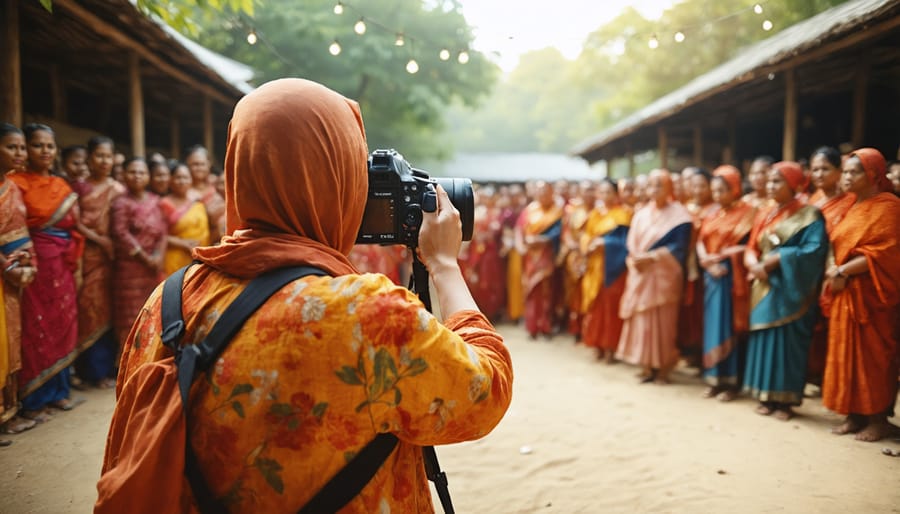
Cultural Sensitivity and Research
Before embarking on any photographic ethnography project, it’s crucial to invest time in understanding cultural perspectives and local customs. This preparatory work isn’t just about avoiding offense; it’s about building trust and creating meaningful documentation that respects the community you’re photographing.
Research local traditions, taboos, and sacred practices thoroughly. Some cultures may have restrictions around photographing certain ceremonies, while others might prohibit capturing images of specific individuals or objects. For instance, many Indigenous communities have strict protocols about photographing sacred sites or ceremonial objects, while some cultures consider it disrespectful to photograph elderly community members without explicit permission.
Always seek proper authorization from community leaders and individuals before taking any photographs. This means learning about local power structures and decision-making processes. Document consent appropriately and be prepared to explain how you plan to use and share the images.
Be mindful of body language and non-verbal cues that might indicate discomfort. Sometimes, even when verbal permission is granted, people may feel uncomfortable but hesitate to express it directly. Developing cultural awareness helps you recognize these subtle signals and adjust your approach accordingly.
Remember that what might seem like an interesting photo opportunity to you could be a private or sensitive moment for others. When in doubt, always err on the side of respect over getting the shot.
Essential Camera Gear for Ceremonial Documentation
Silent Shooting Options
When documenting cultural events, the ability to shoot discreetly is essential for capturing authentic moments without disrupting ceremonies or drawing attention to yourself. Modern mirrorless cameras excel in this regard, offering silent electronic shutters that eliminate the distinctive “click” of traditional DSLRs. The Sony A7 series and Fujifilm X-series cameras are particularly well-suited for this work, featuring robust silent shooting modes without compromising image quality.
Beyond camera choice, several techniques can help you maintain a low profile. Using longer focal lengths (70-200mm) allows you to maintain a respectful distance while still capturing intimate moments. Consider using articulating screens to compose shots without holding the camera to your eye, making your presence less conspicuous. Black camera bodies and lens covers are preferable to chrome or bright colors that might catch light and draw attention.
Timing your shots with natural ambient sounds can help mask any remaining camera noise. During ceremonies with music or chanting, these moments provide natural cover for shutter sounds if you’re using a mechanical shutter. Similarly, shooting during movements or transitions in ceremonies can help your actions blend with the natural flow of events.
Some photographers find success with continuous shooting modes set to their lowest speed, as the rhythmic nature of multiple quiet shots often attracts less attention than single, more deliberate clicks. When possible, position yourself where your shooting activity won’t be in the direct line of sight of participants, perhaps near walls or natural boundaries of the space.
Remember that being unobtrusive isn’t just about equipment – it’s about moving slowly, deliberately, and respectfully within the space you’re documenting.
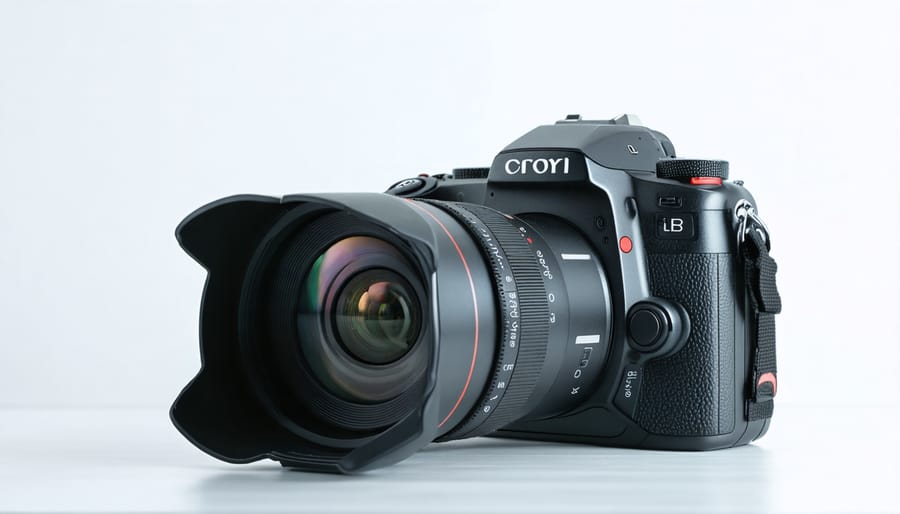
Lighting Considerations
When documenting cultural ceremonies, lighting presents unique challenges that require a delicate balance between technical requirements and cultural respect. Many ceremonies take place in dimly lit environments or during dawn and dusk hours, requiring photographers to adapt without disrupting the sacred atmosphere.
Natural light should always be your first choice when available. Position yourself where ambient light falls favorably, often near windows or doorways, but remain mindful not to block light for participants or other observers. In indoor settings, learn to work with existing light sources like candles, oil lamps, or ceremonial fires, which often hold spiritual significance.
For extremely low-light situations, consider using a fast prime lens with an f/1.8 or f/1.4 aperture. These lenses allow you to capture more light without raising ISO levels excessively, helping maintain image quality while respecting the environment. When selecting camera settings, opt for a slightly higher ISO rather than using flash, as sudden artificial light can be jarring and disrespectful.
If additional lighting is absolutely necessary and permitted, use continuous LED lights at minimal power rather than flash. Position them discreetly and diffuse the light to minimize impact. Some photographers find success with small, battery-powered LED panels that can be mounted on cameras or placed strategically around the space with prior permission.
Remember that some ceremonies explicitly prohibit artificial lighting or photography altogether. Always research and discuss lighting restrictions with community leaders beforehand. Sometimes, working within lighting limitations can lead to more authentic and atmospheric images that better capture the ceremony’s essence and meaning.
Storytelling Through the Lens
Anticipating Key Moments
Success in ethnographic photography often hinges on your ability to anticipate and prepare for key moments during cultural events. Understanding the flow and significance of rituals is crucial for capturing cultural narratives effectively.
Start by researching the event thoroughly beforehand. Connect with community leaders or event organizers to learn about the sequence of activities and their significance. This knowledge helps you position yourself strategically and prepare your equipment appropriately. Create a mental timeline of the ceremony, noting potential highlight moments that shouldn’t be missed.
Consider the movement patterns of participants and identify optimal vantage points. For instance, during a wedding ceremony, know where the couple will exchange vows, when family members might become emotional, or when traditional dances will begin. These insights allow you to preset your camera settings and choose appropriate lenses before crucial moments unfold.
Light changes throughout ceremonies can be challenging. Scout the location in advance to understand how natural or artificial lighting might affect your shots at different stages. Be prepared to adjust your settings quickly as participants move between indoor and outdoor spaces or as the day progresses.
Pay attention to subtle cues that signal important moments. Watch for changes in music, shifts in crowd behavior, or the gathering of specific individuals. These indicators often precede significant ritual elements. Develop a sense of rhythm for the event – many ceremonies follow patterns that, once recognized, help you anticipate what’s coming next.
Keep your camera ready but remain respectful. Sometimes the most powerful moments happen spontaneously between planned activities. Being prepared while maintaining cultural sensitivity ensures you capture authentic expressions of tradition without disrupting the ceremony’s sanctity.
Remember to observe participants’ body language and emotional responses. These often telegraph upcoming significant moments, allowing you to prepare for capturing genuine reactions and meaningful interactions that tell the deeper story of the cultural event.
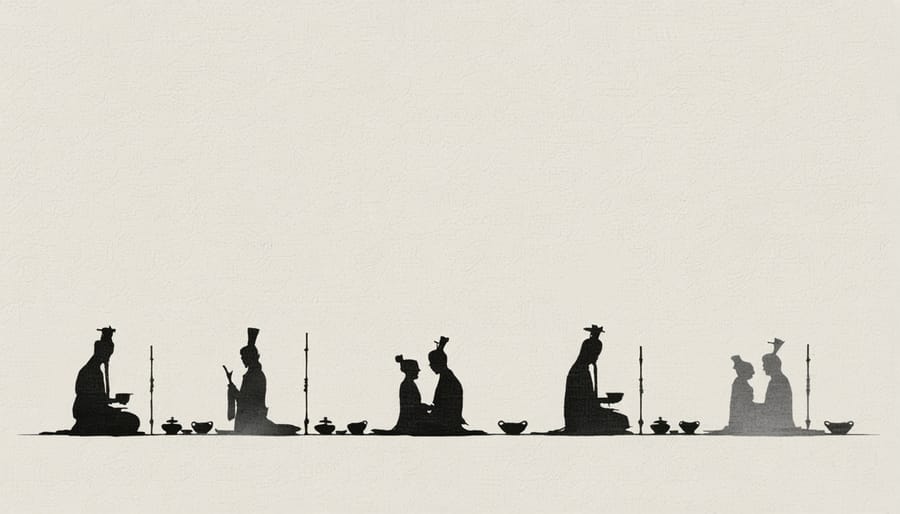
Creating Visual Context
Creating visual context in photographic ethnography goes beyond capturing isolated moments – it’s about weaving a comprehensive narrative that illuminates the cultural fabric of a community. By employing specific cultural photography techniques, photographers can build a richer, more nuanced understanding of their subjects.
Start by establishing the physical environment through wide-angle shots that showcase the location’s geography, architecture, and natural surroundings. These scene-setting images help viewers understand how the environment shapes daily life and cultural practices. Consider capturing images during different times of day and weather conditions to illustrate how the community adapts to environmental changes.
Layer your visual narrative by documenting both the extraordinary and the mundane. While ceremonial events are important, equal attention should be paid to everyday activities like food preparation, work routines, and social gatherings. These seemingly ordinary moments often reveal the most about cultural values and social structures.
Include contextual details that might otherwise go unnoticed – traditional tools, decorative elements, or specific arrangements of objects that carry cultural significance. These details help viewers understand the symbolic meaning behind various practices and customs.
Remember to photograph people in relation to their surroundings and each other. Group dynamics, spatial relationships, and body language can reveal important information about social hierarchies, gender roles, and community relationships. When possible, create visual sequences that show processes from beginning to end, whether it’s a crafting technique, agricultural practice, or social ritual.
Incorporate environmental portraits that place individuals in locations meaningful to their daily lives or cultural roles. These images should convey not just what people look like, but who they are within their cultural context. Pay attention to lighting that enhances the mood and authenticity of the scene rather than imposing artificial aesthetics that might distort cultural representation.
Post-Processing with Purpose
Maintaining Authenticity
When documenting cultural ceremonies through photography, maintaining authenticity requires a delicate balance between artistic expression and ethical responsibility. The fundamental principle is to represent the ceremony and its participants as truthfully as possible while respecting cultural sensitivities.
Post-processing should be minimal and focused primarily on technical corrections rather than creative manipulation. Acceptable adjustments include basic exposure corrections, white balance adjustments, and subtle contrast enhancements that help accurately represent what the human eye witnessed during the ceremony. However, avoid dramatic filters, heavy color manipulation, or extensive retouching that might alter the ceremony’s authentic atmosphere.
Cultural artifacts, ceremonial dress, and sacred objects should never be digitally altered or removed from images. These elements often carry deep spiritual significance, and modifying them could misrepresent their cultural importance. Similarly, the natural appearance of participants should be preserved – avoid retouching that changes physical characteristics or traditional markings.
When working with raw files, develop a consistent editing workflow that prioritizes authenticity. Consider creating a preset specifically for ceremonial photography that maintains natural skin tones and preserves the original lighting conditions. This approach ensures consistency across your documentation while respecting the integrity of the event.
It’s essential to discuss editing boundaries with community leaders before the ceremony. Some cultures may have specific guidelines about how their ceremonies can be represented in photographs. For instance, certain sacred moments might require specific treatment or may not be suitable for enhancement at all.
Document your editing decisions and maintain both original and edited versions of important images. This practice not only demonstrates transparency but also preserves the historical record for future reference. When sharing or publishing the photographs, consider including notes about minimal editing to reinforce the authenticity of your documentation.
Remember that authentic representation extends beyond technical editing – it includes thoughtful image selection and presentation. Choose photographs that accurately reflect the ceremony’s sequence and significance rather than just selecting the most visually striking images. This approach ensures your work serves as a genuine historical record rather than merely artistic interpretation.
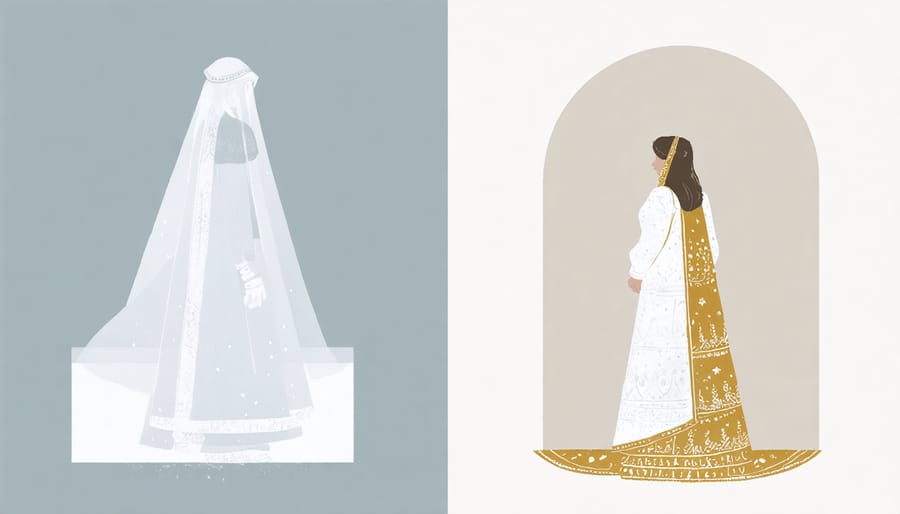
Photographic ethnography represents a powerful intersection of visual documentation and cultural understanding. Throughout this exploration, we’ve seen how this practice goes far beyond merely capturing images – it’s about weaving together stories, preserving traditions, and building bridges between communities through the lens of respect and authenticity.
The key to successful ethnographic photography lies in the delicate balance between technical expertise and cultural sensitivity. Remember that your role as a photographer is that of a respectful observer and documentarian, not an intrusive outsider. Take time to build relationships, seek permission, and understand the cultural context before raising your camera.
The technical aspects – from choosing the right equipment to mastering natural light and candid photography – serve only to support your primary goal: telling authentic stories through images. Always prioritize the dignity and wishes of your subjects over getting the “perfect shot.”
As you embark on your own ethnographic photography projects, maintain an ethical framework that centers on collaboration, consent, and cultural respect. Consider how your images will impact the communities you photograph, both in the present and future. Share your work responsibly, providing context and avoiding stereotypes or misrepresentation.
Remember that successful photographic ethnography is a journey of continuous learning, requiring patience, empathy, and dedication to both the technical craft and cultural understanding. Your work has the potential to preserve important cultural narratives for future generations while fostering cross-cultural appreciation and understanding.
